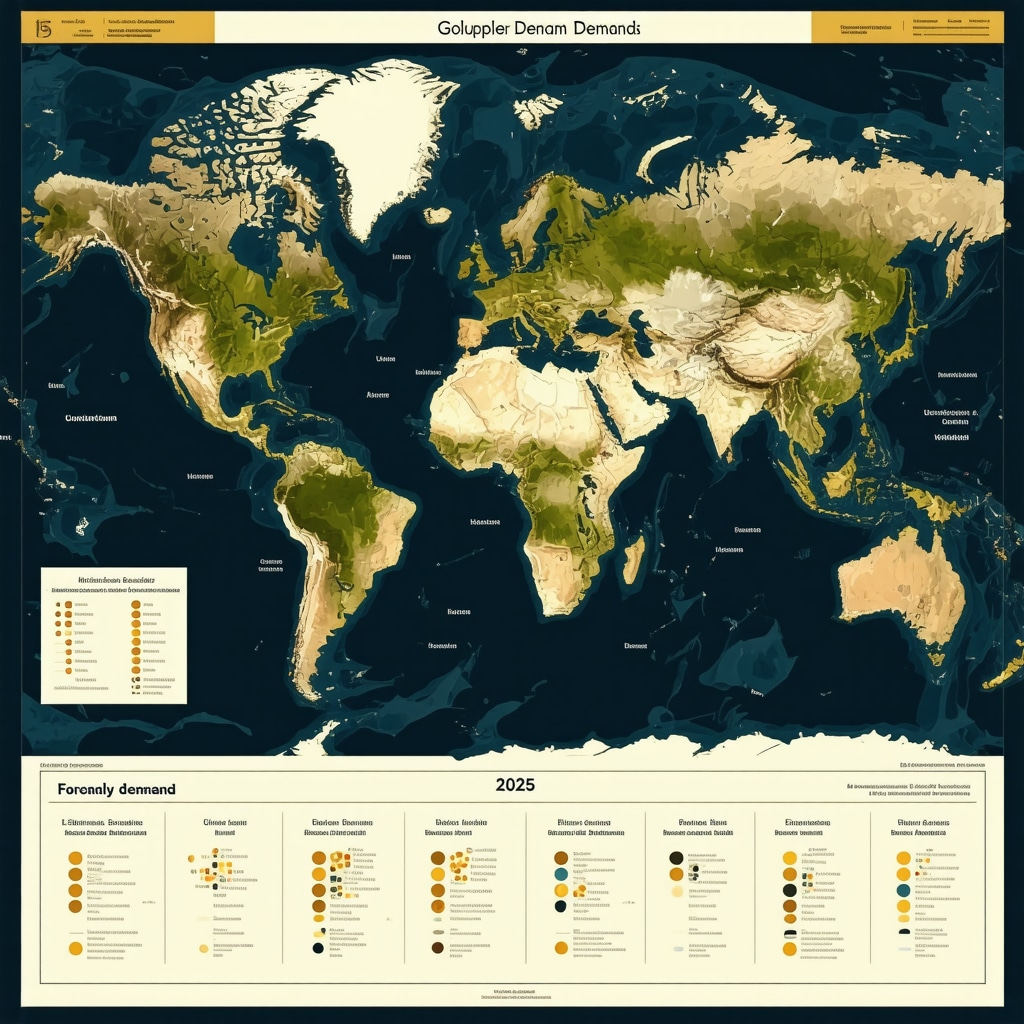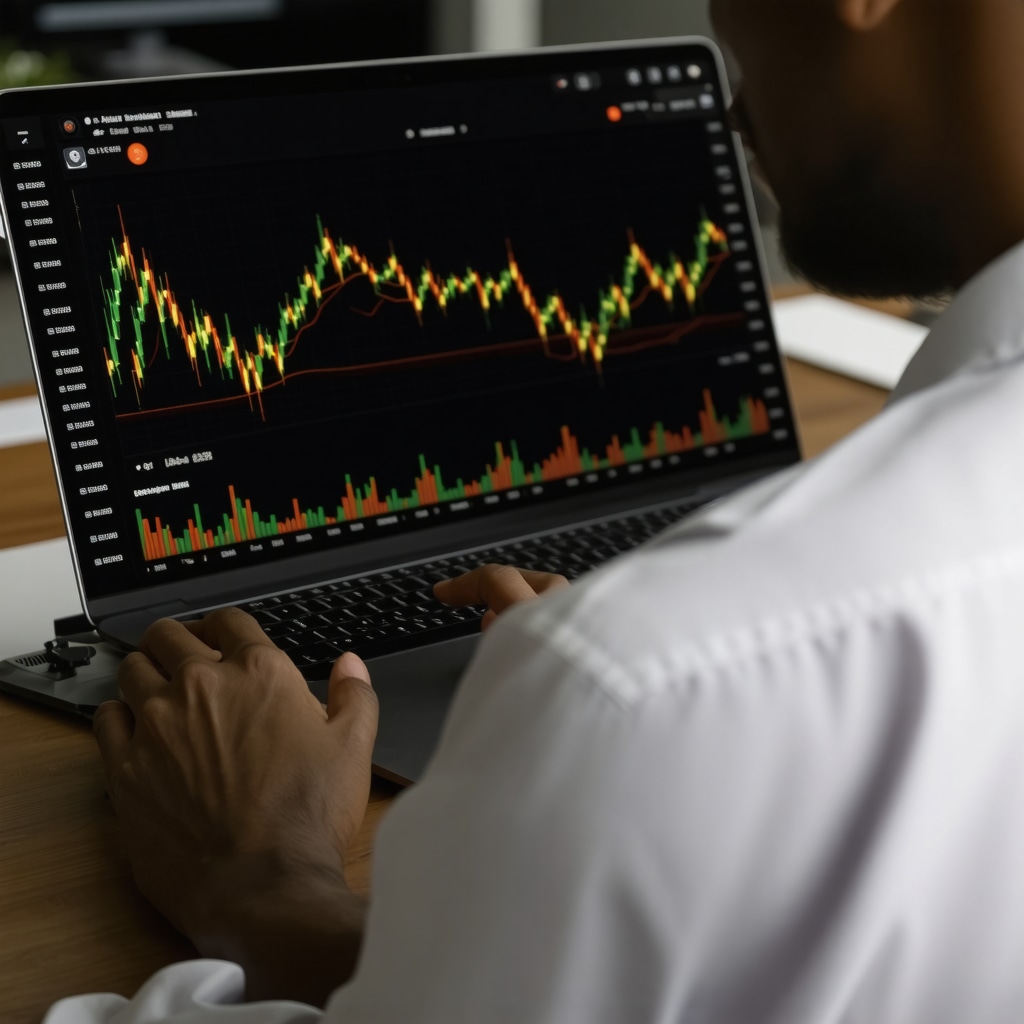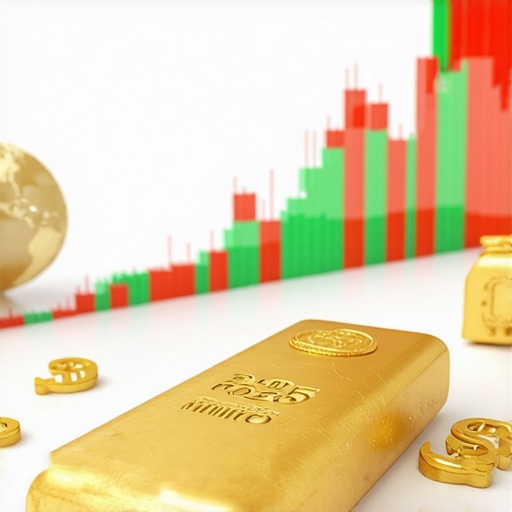Mastering the Complex Interplay of Gold Supply & Demand for Strategic Investment Decisions in 2025
In the realm of precious metals, gold remains a cornerstone of portfolio diversification and economic stability. As we navigate 2025, understanding the intricate supply and demand dynamics becomes paramount for investors aiming to capitalize on emerging trends and mitigate risks. This analysis synthesizes advanced market insights, technical factors, and macroeconomic influences to provide a comprehensive perspective rooted in expert experience.
Unveiling the Layers of Gold Supply: Mining, Recycling, and Central Bank Reserves
How do shifts in global gold mining output influence market equilibrium in 2025?
Gold mining production faces structural challenges—resource depletion, geopolitical tensions, and environmental regulations—impacting the overall supply. According to industry reports, supply disruptions in major mining regions like South Africa and Russia could tighten available stockpiles, prompting strategic accumulation by institutional investors. Recycling of gold, driven by technological advancements in refining, also contributes significantly to supply elasticity, especially during periods of market volatility.
The Demand Side: Industry, Jewelry, and Investment Flows
What are the emerging drivers in gold demand that could redefine market trajectories in 2025?
Demand from industry sectors such as electronics and aerospace continues to grow, fueled by innovation and miniaturization. The jewelry market, historically a major consumer, is experiencing shifts due to changing consumer preferences and supply chain disruptions. Notably, **investment demand**—including gold ETFs, futures, and physical holdings—remains a dominant force, especially amid inflationary pressures and geopolitical uncertainties. As outlined in demand trend analyses, central banks’ strategic purchases also play a critical role in shaping supply-demand balances.
Is Gold Price Volatility a Reflection of Supply-Demand Imbalances or External Factors?
Gold prices are inherently volatile, often reflecting a confluence of supply-demand shifts and macroeconomic variables such as USD strength, inflation rates, and political stability. The debate persists among experts whether short-term price swings are primarily driven by physical market fundamentals or speculative trading activities. Analyzing price forecasts reveals that understanding these layers is crucial for deploying effective trading strategies.
What advanced techniques can investors employ to capitalize on supply-demand signals in 2025?
Successful investors leverage technical analysis combined with macroeconomic indicators—such as global reserve holdings and industrial consumption patterns—to optimize entry and exit points. Techniques include analyzing gold futures market trends, geopolitical risk assessment, and central bank reserve movements. For tactical guidance, explore futures trading strategies.
As the gold market evolves, continuous monitoring of supply-demand metrics and macroeconomic signals becomes essential. For those seeking a comprehensive understanding, engaging with expert analyses and participating in forums can provide nuanced insights. To deepen your expertise, consider exploring advanced gold trading techniques.
In conclusion, mastering the supply and demand intricacies in 2025 will empower investors to make more informed, strategic decisions—transforming market fluctuations from risks into opportunities.
Deciphering Gold’s Hidden Market Signals: Advanced Analytical Approaches for 2025
As gold continues to serve as a barometer for global economic health, sophisticated investors are turning to multi-layered analytical tools to anticipate market shifts. Beyond traditional supply-demand metrics, integrating geopolitical risk assessments, macroeconomic indicators, and emerging industry trends can yield a competitive edge. For instance, tracking central bank gold reserve adjustments—highlighted in central bank activity reports—provides critical insights into institutional confidence and future price trajectories.
How Do Geopolitical Tensions and Economic Policies Shape Gold Flows in 2025?
Geopolitical uncertainties and shifts in monetary policy are more intertwined than ever, directly influencing gold’s role as a safe haven. Rising tensions in regions like Eastern Europe and the South China Sea, coupled with aggressive monetary easing or tightening by major economies, can trigger sudden capital reallocation towards physical gold and gold-backed securities. As experts discuss in market analysis reports, understanding these external catalysts is crucial for timing investments effectively.
Can Gold serve as a resilient hedge against emerging economic risks in 2025?
Yes, gold’s historical resilience during periods of economic turmoil and inflation underscores its strategic importance. Leveraging advanced portfolio strategies—such as dynamic allocation models that adjust gold holdings based on real-time risk assessments—can protect investments against unforeseen shocks. To refine your approach, explore gold IRA planning for retirement security and diversification.

Empowering Your Investment Decisions with Cutting-Edge Data and Tools
In an era where data-driven decisions dominate, utilizing platforms that synthesize supply-demand analytics, macroeconomic trends, and geopolitical updates is essential. Tools like futures trading techniques and diversified ETF portfolios empower investors to implement nuanced strategies aligned with evolving market conditions. Staying ahead involves continuous education—consider participating in expert webinars or forums for real-time insights.
Furthermore, understanding supply-side innovations, such as advancements in gold mining technology and recycling efficiency, can unlock new opportunities. For instance, the integration of environmentally friendly extraction methods may influence supply stability, affecting prices in unforeseen ways. For a comprehensive understanding, visit supply-demand analysis.
What role will technological innovation and geopolitical stability play in shaping gold’s market in 2025?
Both factors are poised to significantly influence gold valuation. Technological breakthroughs could enhance mining efficiency or introduce new forms of gold investment, while geopolitical stability—or lack thereof—will continue to drive safe-haven demand. Keeping abreast of these developments is vital for crafting resilient investment strategies.
Engagement with expert analyses and leveraging advanced analytical frameworks will be pivotal. For more insights, explore maximizing gains through futures trading and other innovative techniques.
Harnessing Emerging Industry Trends: Technological Disruptions and Gold Market Dynamics in 2025
As the global economy evolves, technological innovations are reshaping the landscape of gold demand and supply. From blockchain-based transactions to environmentally sustainable mining practices, these advancements can significantly influence market stability and investor confidence. For example, the integration of blockchain technology in gold trading platforms enhances transparency and reduces counterparty risk, fostering deeper liquidity and attracting institutional investors. According to a report by the World Gold Council, such technological shifts are poised to redefine how gold is perceived as an asset class, emphasizing security and traceability.
What is the impact of emerging technologies on the liquidity and transparency of gold markets?
Emerging technologies like blockchain and AI-driven analytics streamline transaction processes, reduce settlement times, and enhance market transparency. These innovations mitigate traditional frictions associated with physical gold trading, enabling more efficient price discovery and reducing arbitrage opportunities. For investors, understanding these technological drivers is crucial for timing entry points and assessing market liquidity dynamics. To stay ahead, explore resources on digital asset integration in precious metals markets and their implications for long-term investment strategies.

Geopolitical Risks and Their Nuanced Influence on Gold Flows in 2025
Geopolitical tensions continue to serve as catalysts for shifts in gold flows, yet their effects are increasingly complex. For instance, regional conflicts in the Middle East, coupled with economic sanctions, can disrupt supply chains while simultaneously boosting safe-haven demand in different markets. A nuanced understanding of these patterns is essential; for example, the rise in gold imports by central banks in emerging markets often signals a strategic hedge against currency volatility rather than mere inflation concerns. For a detailed analysis, review the IMF’s report on geopolitical risks and reserve management.
How do central bank reserve policies adapt to geopolitical shifts, and what does this mean for gold prices in 2025?
Central banks are increasingly adopting dynamic reserve management strategies, balancing traditional currency holdings with gold during periods of heightened geopolitical uncertainty. This shift not only supports currency stability but also signals institutional confidence in gold as a strategic asset. Monitoring these policy changes through official reserve reports offers valuable insights for investors aiming to anticipate price movements. For practical application, consider integrating central bank reserve data into your macroeconomic models and risk assessments.
Deciphering the Impact of Technological Innovations on Gold Market Liquidity and Transparency
Emerging technologies such as blockchain, AI-driven analytics, and digital asset platforms are revolutionizing gold trading, fundamentally altering market liquidity and transparency. These advancements facilitate near-instant settlement, reduce counterparty risks, and enable real-time tracking of gold provenance, thereby enhancing investor confidence and market efficiency. According to the World Gold Council’s recent report, these innovations are poised to increase institutional participation and reshape liquidity dynamics in the precious metals sector.
How Geopolitical Risks and Economic Policies Shape Gold Flows in 2025
Geopolitical tensions and macroeconomic policy shifts continue to influence gold’s role as a safe haven. Notably, regional conflicts, sanctions, and currency devaluations prompt central banks and institutional investors to adjust holdings strategically. The IMF’s report on geopolitical risks and reserve management highlights how reserve diversification and hedging strategies evolve in response to geopolitical uncertainties, impacting global demand and price trajectories.
What are the implications of central bank reserve policy adjustments for gold prices in 2025?
Central banks increasingly adopt dynamic reserve management, balancing currency reserves with gold to hedge against geopolitical and economic volatility. This strategic shift signals confidence in gold’s stability and influences market sentiment. Monitoring official reserve reports and policy statements provides valuable foresight for investors aiming to anticipate price movements and position accordingly. Integrating these insights into macroeconomic models can significantly enhance investment decision-making processes.
Harnessing Advanced Data and Analytical Tools for Superior Investment Outcomes
In today’s data-driven environment, sophisticated analytical platforms that synthesize supply-demand metrics, macroeconomic indicators, and geopolitical developments are indispensable. Tools like AI-powered market analysis, real-time reserve tracking, and futures trend analytics empower investors to develop nuanced, tactical strategies aligned with evolving conditions. For example, leveraging futures market analytics and geopolitical risk assessments can optimize timing and risk exposure. Learn more about these techniques at effective futures trading strategies.
Staying ahead requires continuous education and engagement with expert analyses, online forums, and industry reports. Exploring supply-side innovations—such as environmentally sustainable mining practices and blockchain-based traceability—can uncover new opportunities for diversification and risk mitigation. Visit supply-demand analysis resources for comprehensive insights.
How will technological advances and geopolitical stability influence gold’s market resilience in 2025?
Technological progress enhances market security and efficiency, while geopolitical stability—or its absence—continues to drive safe-haven demand. Investors should monitor breakthroughs in environmentally friendly extraction, blockchain traceability, and AI-driven market analytics to adapt strategies proactively. Staying informed through expert reports, webinars, and industry updates will be crucial for navigating the complex landscape of 2025.
Expert Insights & Advanced Considerations
Gold market resilience hinges on technological innovation, geopolitical shifts, and macroeconomic stability, demanding investors stay informed and adaptable.
Understanding how emerging technologies like blockchain and AI-driven analytics influence market transparency can give investors a competitive edge. Additionally, recognizing the nuanced effects of geopolitical tensions and central bank reserve policies on gold flows enables more strategic positioning. Staying engaged with authoritative sources such as the World Gold Council and IMF reports ensures access to the latest data and expert analyses.
Supply-side advancements, including environmentally sustainable mining, are set to redefine supply stability, impacting prices and investment opportunities.
Expert investors leverage comprehensive tools like futures trading strategies and macroeconomic models to anticipate market shifts, optimizing their portfolios accordingly. Continuous education and participation in industry forums are vital for maintaining a competitive edge in 2025’s evolving gold landscape.
Curated Expert Resources
- World Gold Council: The definitive authority on gold market statistics, trends, and technological innovations shaping the sector.
- IMF Reports on Geopolitical Risks: In-depth analyses of how geopolitical tensions influence reserve management and gold demand globally.
- Buying Gold Now: A comprehensive platform offering advanced trading techniques, supply-demand insights, and strategic investment guides tailored for 2025.
- Gold Price Forecasts & Market Trends: Expert predictions and trend analyses critical for timing and risk assessment.
Final Expert Perspective
Mastering gold supply and demand dynamics in 2025 requires an integrated approach, combining technological insights, geopolitical intelligence, and macroeconomic expertise. The most successful investors will be those who leverage advanced analytical tools, stay informed through authoritative resources, and remain adaptable to rapid market changes. Your next step is to deepen your understanding by exploring our recommended resources and engaging with industry professionals—your strategic advantage in a complex, high-stakes environment. For tailored advice or to share your insights, contact our expert team today and stay ahead in the gold investment arena.










